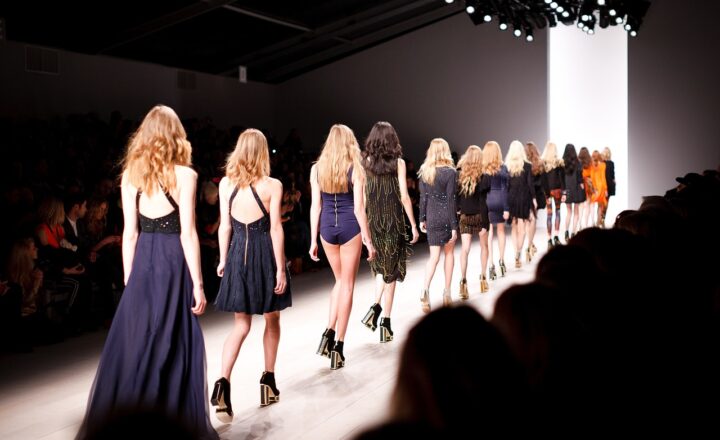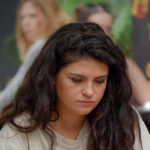How Eco-Friendly Fashion Trends Are Reshaping the Industry Forever
November 18, 2024

In recent years, the fashion industry has undergone a seismic shift as consumers become more aware of the environmental impact of their clothing choices. Today, eco-friendly fashion is not just a trend; it’s a movement that’s changing the very fabric of the industry. Brands, designers, and shoppers alike are embracing sustainable practices and materials, reshaping the future of fashion in ways that were unimaginable just a few years ago.
1. The Rise of Eco-Friendly Fashion
Consumer demand is one of the primary drivers behind the rise of eco-friendly fashion. As awareness grows about the negative effects of fast fashion, including waste, pollution, and unethical labor practices, consumers are seeking ethical alternatives. This has led to an increase in demand for sustainable materials, transparent supply chains, and eco-conscious production techniques.
Key factors contributing to this rise include:
- Awareness and Education: More consumers now understand the environmental implications of their purchases. Documentaries like “The True Cost” and campaigns by organizations like Fashion Revolution have shed light on the dark side of the fashion world.
- Celebrity Influence: Celebrities are increasingly using their platforms to advocate for sustainable fashion. From high-profile red carpet appearances in eco-friendly gowns to partnerships with eco-conscious brands, celebrities can significantly sway public perception and choices.
- Technological Advancements: Innovations in textile technology have made it easier for brands to use sustainable materials and reduce waste. Fabrics made from recycled plastic, organic fibers, and even bio-fabricated materials are now available and making waves in the industry.
As a result, eco-friendly fashion is not just a trend—it’s becoming a new norm.
2. Defining Eco-Friendly Fashion
Eco-friendly fashion encompasses a wide range of practices and materials aimed at reducing the fashion industry’s ecological footprint. Some key elements include:
- Sustainable Materials: Brands are increasingly using organic cotton, hemp, Tencel, and recycled materials in their production processes. These materials have a lower environmental impact compared to conventional fabrics like polyester or conventional cotton.
- Ethical Production Practices: This includes fair wages, safe working conditions, and adherence to labor laws in the production of clothing. Brands that prioritize ethical labor practices often communicate their values through certifications and transparency initiatives.
- Circular Fashion: The concept of circular fashion promotes a lifecycle approach to clothing, where garments are designed for durability, repair, and recycling. This framework aims to minimize waste in the fashion industry by encouraging recycling, thrifting, and second-hand shopping.
By understanding the various aspects of eco-friendly fashion, consumers can make more informed choices about their clothing purchases.
3. Leading Eco-Friendly Fashion Brands
As the demand for sustainable fashion rises, several brands are leading the charge in eco-friendly practices. Here are a few notable companies making a significant impact:
- Patagonia: A frontrunner in sustainable outdoor clothing, Patagonia is renowned for its commitment to environmental conservation. They use recycled materials in their clothing and encourage customers to repair rather than replace their garments. Their mission statement includes a commitment to using business to inspire and implement solutions to the environmental crisis.
- Reformation: This women’s clothing brand focuses on sustainability by using eco-friendly materials and ethical production processes. Reformation provides customers with information about the environmental impact of each item, promoting transparency and conscious shopping.
- Eileen Fisher: Known for its timeless and simple designs, Eileen Fisher has made a strong commitment to sustainability by adopting responsible sourcing practices and promoting recycling initiatives through their “Renew” program, whereby customers can trade in old clothes for store credit.
These brands exemplify how sustainability can be harmonized with style, proving that eco-friendly fashion can be both fashionable and environmentally responsible.
4. The Impact of Eco-Friendly Fashion Trends
Eco-friendly fashion trends are reshaping the industry in numerous ways:
- Consumer Power: Shoppers are increasingly embracing sustainability and prioritizing responsible brands. This shift in consumer behavior is forcing major retailers to adapt their practices to meet the demand for greener products, even if it means investing more in sustainable alternatives.
- Innovation in Design: Designers are rethinking the approach to fashion, focusing on timeless pieces rather than fast fashion cycles. This shift encourages quality over quantity and creates a demand for versatile clothing that lasts.
- Policy Changes: The growing eco-consciousness is prompting legislative changes. Governments are moving to regulate waste and promote sustainability, influencing larger brands to reevaluate their practices and set a more sustainable example for the industry.
These changes signal a significant departure from the unsustainable practices of the past, paving the way for a more environmentally-friendly future.
5. The Future of Eco-Friendly Fashion
The future of fashion is promising, marked by innovation and an unwavering commitment to sustainability. Here are trends to watch for:
- Biodegradable Materials: The advancement of biodegradable textiles, which decompose naturally without harming the environment, is set to change the game. Companies are researching new materials that can break down safely after their life cycle ends.
- Technology & Fashion Integration: The integration of technology in fashion design will lead to new sustainable practices. Innovations like 3D printing, augmented reality fitting, and machine learning can allow for more efficient production cycles and reduce waste.
- Community-driven Initiatives: The future will likely see more community initiatives aimed at promoting sustainable fashion. Local swap meets, upcycling workshops, and second-hand marketplaces are becoming more popular as consumers search for ways to engage within their communities and reduce waste.
As consumers become more conscious and businesses innovate, eco-friendly fashion is set to solidify its place as a strong contender in the industry.
Conclusion
The eco-friendly fashion movement has sparked a revolution in an industry notorious for its environmental impact. Through increased awareness, innovative practices, and shifting consumer preferences, sustainable fashion is becoming the norm rather than the exception. As we move forward, it’s crucial for both brands and consumers to prioritize sustainability to protect our planet for future generations.
Together we can ensure that the fashion industry not only adapts to changing values but thrives while doing so, leaving a legacy of conscious production and consumption that values our world.







